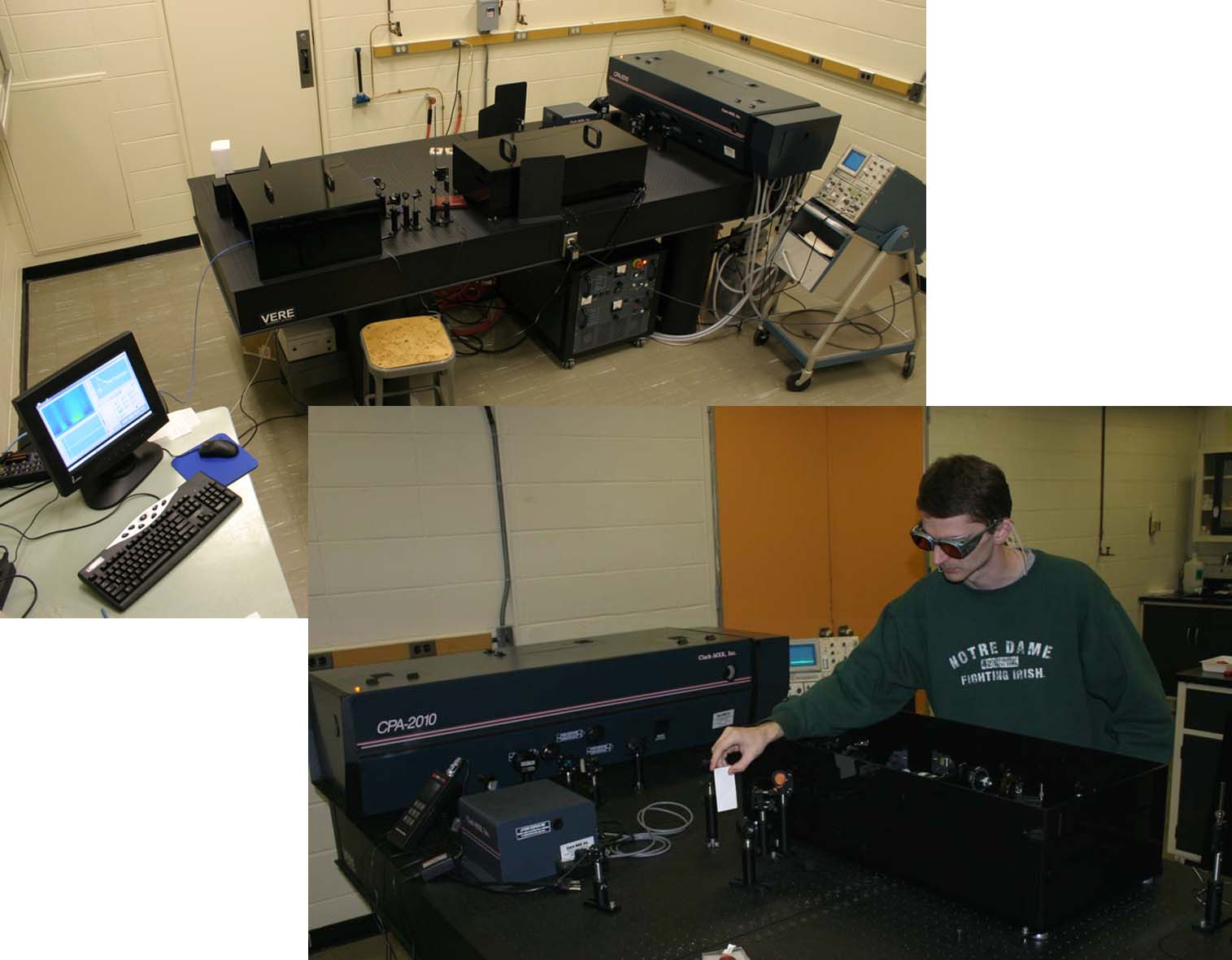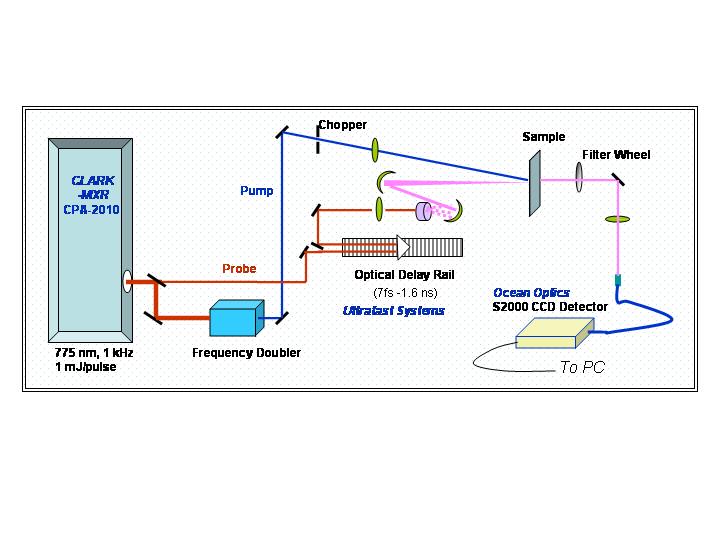Femtosecond
Transient Absorption Spectroscopy
Ultrafast spectroscopy is an interdisciplinary area of research that spans various disciplines in chemistry and provides essential information on the mechanistic and kinetic details of chemical events that occur in the timescale of 10 femtoseconds to 100 picoseconds. The chemical events in these experiments are initiated by an ultrafast laser pulse (pump) and the photophysical and photochemical events are probed by another ultrafast laser probe pulse.

Femtosecond Transient
Absorption Spectrometer is operational for
carrying out transient absorption experiments. The
CPA-2010
1 kHz Amplified Ti:Sapphire Laser System from Clark MXR provides 775, 387 and 258 nm laser
pulses for excitation. The software developed by Ultrafast Systems is user
friendly
and allows the user to monitor the kinetics at different wavelengths
and
spectral evolution at different times during data acquistion.
ASCII files can be exported to ORIGIN or
other platforms. The methodology of
femtosecond laser flash photolysis is useful in characterizing singlet
and triplet excited states, excited state energy transfer, inter- and
intramolecular electron transfer reactions, charge transfer
complexation and radical recombination in aqueous and nonaqueous
solvents as well as in heterogeneous systems such as colloidal
suspensions and thin films.
Excitation wavelength: 775,
387 and 258
nm, pulse width 150 fs, 1 kHz, 1 mJ/pulse @
775 nm.
Current
Detection Limit: Delta Abs of ~0.0005
Delay Times.: Upto 1.6 ns with
delay increments of 10 fs or greater. Each delay setting averages 2500
shots in
5 seconds (collection time can be reduced for faster aquistion). The delay times can be varied during the
experiment to cover both short and long times in a single experiment.
